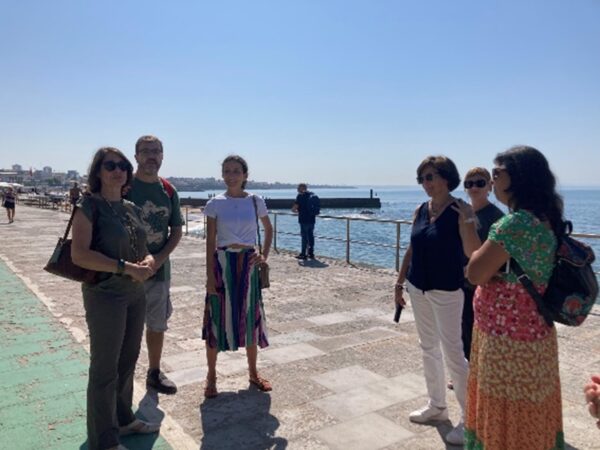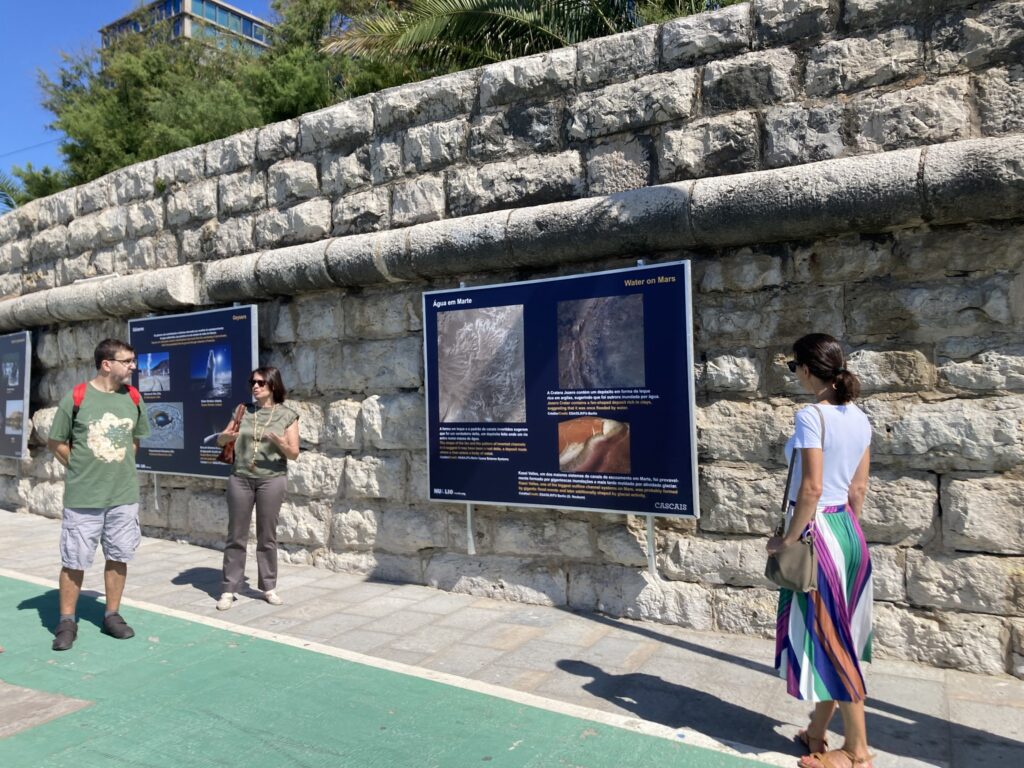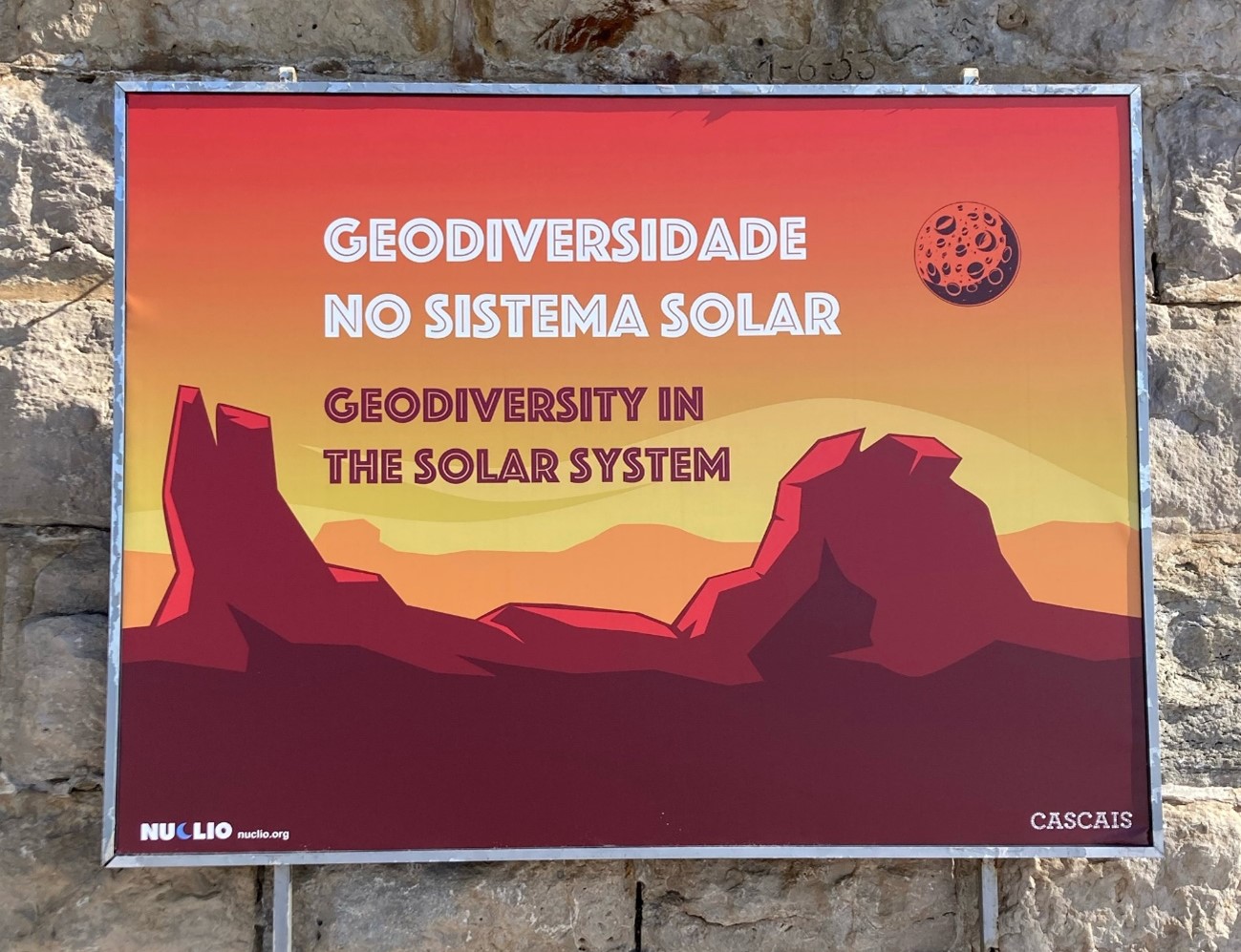The Geodiversity in the Solar System exhibition, organized by the Cascais Municipal Council and NUCLIO, has captured the attention of science enthusiasts and the general public alike. This captivating event transformed the Estoril Maritime Walk in Cascais into an open-air gallery, inviting visitors to embark on a journey through the fascinating world of geodiversity.
The exhibition, inaugurated on the 23rd of June, aimed to raise awareness about the geological wonders that shape our planet and extend our understanding of the solar system.
As visitors strolled along the seaside promenade, they were treated to an immersive experience, delving into the diverse geological phenomena and structures that exist both on Earth and beyond.

Joana Balsemão, the municipal councillor at the Cascais City Council and responsible for Environment, Decarbonization, and Citizenship and Participation policies, as well as members of the municipality, the Associação Bandeira Azul (Blue Flag Association) (which selected Geodiversity as this year’s theme), the NUCLIO team, and the general public were present at the inaugural event.
Geodiversity encompasses all the non-living elements and processes that constitute geological environments. From rocks, soils, rivers, and lakes to volcanism, storms, and sedimentation, these factors play a vital role in shaping our natural landscapes. They provide the foundation upon which biodiversity flourishes, creating the conditions necessary for life to thrive on Earth. Recognizing the significance of geological heritage and the need for its preservation, UNESCO established the World Network of Geoparks. These geoparks serve as guardians of our planet’s geological wonders and promote sustainable development by fostering a harmonious relationship between nature and society.
The Geodiversity in Solar System exhibition expanded on this concept by offering a glimpse into the geodiversity of the entire Solar System, with a special focus on our own planet, which has been extensively studied. Visitors were presented with a series of captivating posters adorning the walls along the promenade, showcasing various geological phenomena and structures found not only on Earth but also on other planets and rocky bodies within our celestial neighbourhood. From the awe-inspiring impact craters dotting the surfaces of other planets to the volcanoes and hidden underground oceans, the exhibition shed light on the remarkable richness of geological diversity beyond our home planet.

The exhibition’s opening marked an important milestone in the realm of science communication, exemplifying how science centres and museums can extend their reach beyond traditional walls, engaging the public in casual encounters with scientific knowledge. The Geodiversity in the Solar System exhibition serves as a testament to the power of scientific outreach and the allure of exploring our planet and the wider cosmos. It highlights geodiversity’s vital role in fostering life on Earth and offers a glimpse into the geological wonders that lie beyond our familiar horizons. By promoting an understanding and appreciation of our geological heritage, events like these pave the way for a more sustainable and enlightened future.
You can find more information about this exhibition here and a video of the opening event here.

